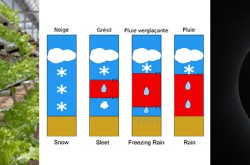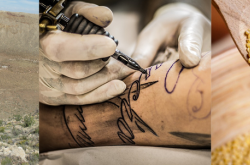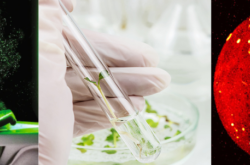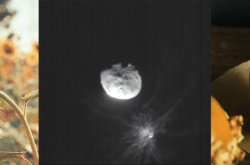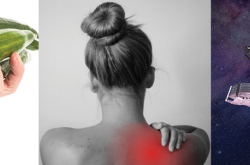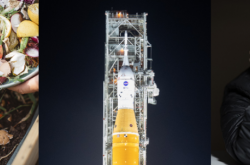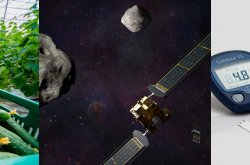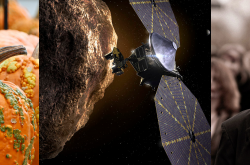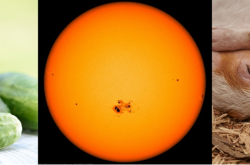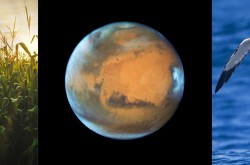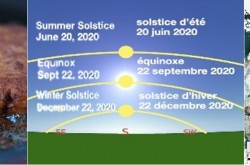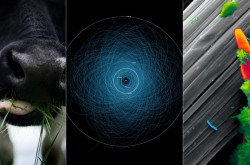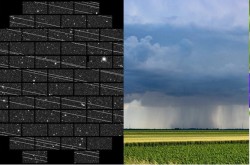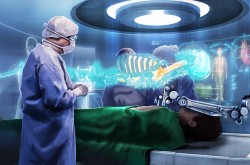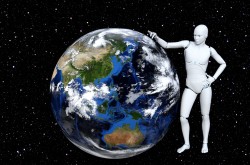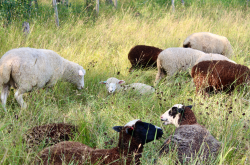3 things you should know about salty soil, invisibility, and Canada’s lunar rover

Meet Renée-Claude Goulet, Cassandra Marion, and Michelle Campbell Mekarski.
They are Ingenium’s science advisors, providing expert scientific advice on key subjects relating to the Canada Agriculture and Food Museum, the Canada Aviation and Space Museum, and the Canada Science and Technology Museum.
In this colourful monthly blog series, Ingenium’s science advisors offer up quirky nuggets related to their areas of expertise. For the December edition, they explored the problem with high salinity levels in agricultural soils, a breakthrough in invisibility, and the emerging designs for the Canadian Lunar Rover Mission.

Salinized soils often show a white crust once dried after a wet period.
Salty soils: Canadian research is key to food security
Around the world, high salinity levels in agricultural soils are threatening our food supply.
In fact, the Food and Agriculture Organization of the United Nations estimates that about three per cent of global topsoils are already affected by excessive salinity. Much of this is attributed to human activity, through unsustainable farming practices and climate change.
In the right amounts, salts — water-soluble minerals and compounds such as calcium, magnesium, sulfate, and chloride — act as plant food, or fertilizer. Too much, however, creates problems for soil functioning and prevents plants from absorbing water, which greatly reduces yields.
In Canada, salt accumulation in soil mainly affects the Prairies, due to precipitation levels and how soils formed in the region. While improvements in farming practices over the past 40 years have lowered the risk of lands becoming unfarmable, there are some areas where salinity is too high — which makes growing crops a losing battle.
Fortunately, a Canadian lab in Swift Current, Saskatchewan has committed to studying this important issue. At the Agriculture and Agri-Food Canada (AAFC) Salinity Tolerance Testing Laboratory, scientists are studying crops' abilities to grow in salt-affected soils, and working to identify salt-tolerant strains.
Plants vary in their ability to grow in salt-affected soils; some are even specialized to grow in a saline environment. At the AAFC laboratory, researchers use automated growth pods and chambers to study how each type of crop is affected by saline soil, from germination to harvest. Salt tolerance is difficult to study in the field, as the conditions are just too variable. The lab enables scientists to fine tune the experimental conditions, rendering reliable results.
Lab research helps agronomists to make better recommendations for farmers dealing with high salinity in soils. For example, peas and beans can’t tolerate any salinity, however, canola and barley could be good alternatives. Lab researchers also identify salt-tolerant strains of crops which can be used to breed new versions of crops, making them better adapted for saline soils. One such example is a new type of forage grass, which is both nutritious for cattle and salt tolerant. This innovation has enabled farmers to convert salt-affected land from crop to forage or pasture, which helps rehabilitate the land while providing stable income for farmers.
Understanding salt tolerance in food crops is an essential tool in the farmers' toolkit. The ongoing work at the AAFC lab is a valuable example of how Canadian innovation is helping us grow in a sustainable direction.
By Renée-Claude Goulet

The lunar surface, captured by an Apollo astronaut. Note the crater-rich surface and how some craters are well illuminated while others are partly in shadow.
Canada’s Lunar Rover Mission design phase is underway
Two Canadian companies — MDA Ltd. and Canadensys Aerospace Corporation — will compete to design concepts for the Canadian Lunar Rover Mission, which aims to send a rover to the Moon by 2026.
Earlier this month, both MDA and Canadensys were awarded eight-month contracts by the Canadian Space Agency (CSA) for the Lunar Exploration Accelerator Program (LEAP)’s Lunar Rover Mission initial design Phase A. The winning rover concept will go forward to the next phase of funding to refine their design, build, and ready their rover for launch to the Moon.
Though Canada has contributed a range of science instruments for Mars rover missions, this will be the first Canadian rover to explore beyond Earth.
The Lunar Rover Mission is a collaboration between the CSA and NASA; Canada will provide a small rover platform and one science instrument, and the U.S. will provide a second instrument. The rover is destined for the South Polar region of the Moon, where it must be able to survive and explore the lunar environment, and analyze the lunar surface with hopes of locating several key resources — namely water ice, hydrogen, and oxygen.
The rover designs must address and assess the feasibility of several key technologies:
- Mobility: the way in which the rover gets around on the Moon
- Communications: how to communicate from the Earth to the rover on the Moon
- Operations: day-to-day activities, overall operation, and management of the mission
- Thermal control: the rover will need to keep its instruments warm through the lunar night, which lasts 14 Earth days and can get as cold as -232 C!
- Power generation and storage: must have small but efficient solar panels and batteries, to last the 14-day lunar night
- Semi-autonomous/autonomous operations: the rover should be able to conduct a variety of tasks, such as short drives or analyses, without a constant human operator
Through a partnership with NASA, Canada will be able to launch its rover to the Moon using NASA’s Commercial Lunar Payload Services (CLPS), which will be responsible for transporting a variety of cargo to the Moon’s surface.
Canada is part of an international effort to return humans to the Moon. Through LEAP, the CSA has committed 150 million dollars over five years to the Canadian space sector. These funds will enable industry and academia to develop and conduct science instruments and experiments for the Moon, to advance and demonstrate innovative technologies in lunar orbit, on the Moon’s surface, and to develop technologies required for deep space missions.
Go further:
Video: Canada is designing a rover for Moon exploration (Canadian Space Agency)
Learn more about the CSA’s Lunar Exploration Accelerator Program
Read the CSA’s Moon Exploration News
MDA’s rover design team (spoiler alert: Ingenium is part of the science team!)
By Cassandra Marion

Electrons circling near the nucleus of an atom have less energy than electrons circling far away from the nucleus. Electrons can change positions by absorbing or releasing energy.
Invisibility: it’s not magic, it’s physics!
Have you ever dreamed of becoming invisible? Well, your dreams could be a reality…if you’re willing to be frozen and crushed.
A lab at the Massachusetts Institute of Technology (MIT) was recently able to demonstrate a phenomenon that was predicted decades ago: if you make a cloud of atoms cold and dense enough, you can make it invisible.
Everything is made of atoms: your chair, the trees, the air, and you. Atoms are made from even smaller particles called protons, neutrons, and electrons which are arranged a bit like the solar system. In our solar system, a bunch of planets orbit the Sun. In an atom, a bunch of electrons orbit a cluster of protons and neutrons called the nucleus. Unlike planets, however, electrons can jump between orbits — and even share the same orbit with other electrons — but only in a specific pattern.
Electrons jump around quite a bit. If you give an electron some energy (for example by shining a light on it), the electron can jump to an orbit further from the nucleus. If an electron loses some energy, it produces some light, and falls into orbit closer to the nucleus. The type of light absorbed and produced determines the colour we see when looking at an object.
So what does this have to do with invisibility?
When light hits an object, electrons jump between orbits, causing light to be absorbed or produced in a specific way that we can see as colours.
Now, what happens if you make atoms SUPER cold and SUPER squeezed? Super cold temperatures slow atoms down. As atoms lose energy, their electrons move into those low energy orbits close to the nucleus. Under super high pressures, the electrons are so crushed together that they cannot escape their positions.
Under these conditions, even if you shine light on these atoms, the electrons cannot jump around. Electrons that cannot jump between orbits cannot absorb or produce light, which leaves nothing for us to see. Instead, light passes straight through the atom without interacting with it, rendering it invisible.
Though the team was unable to achieve complete invisibility in a cloud of lithium atoms (they were a couple thousandths of a degree too warm), their experiment has demonstrated that it is possible to make something disappear — using science instead of magic.
By Michelle Campbell Mekarski
Enjoying the Ingenium Channel? Help us improve your experience with a short survey!










